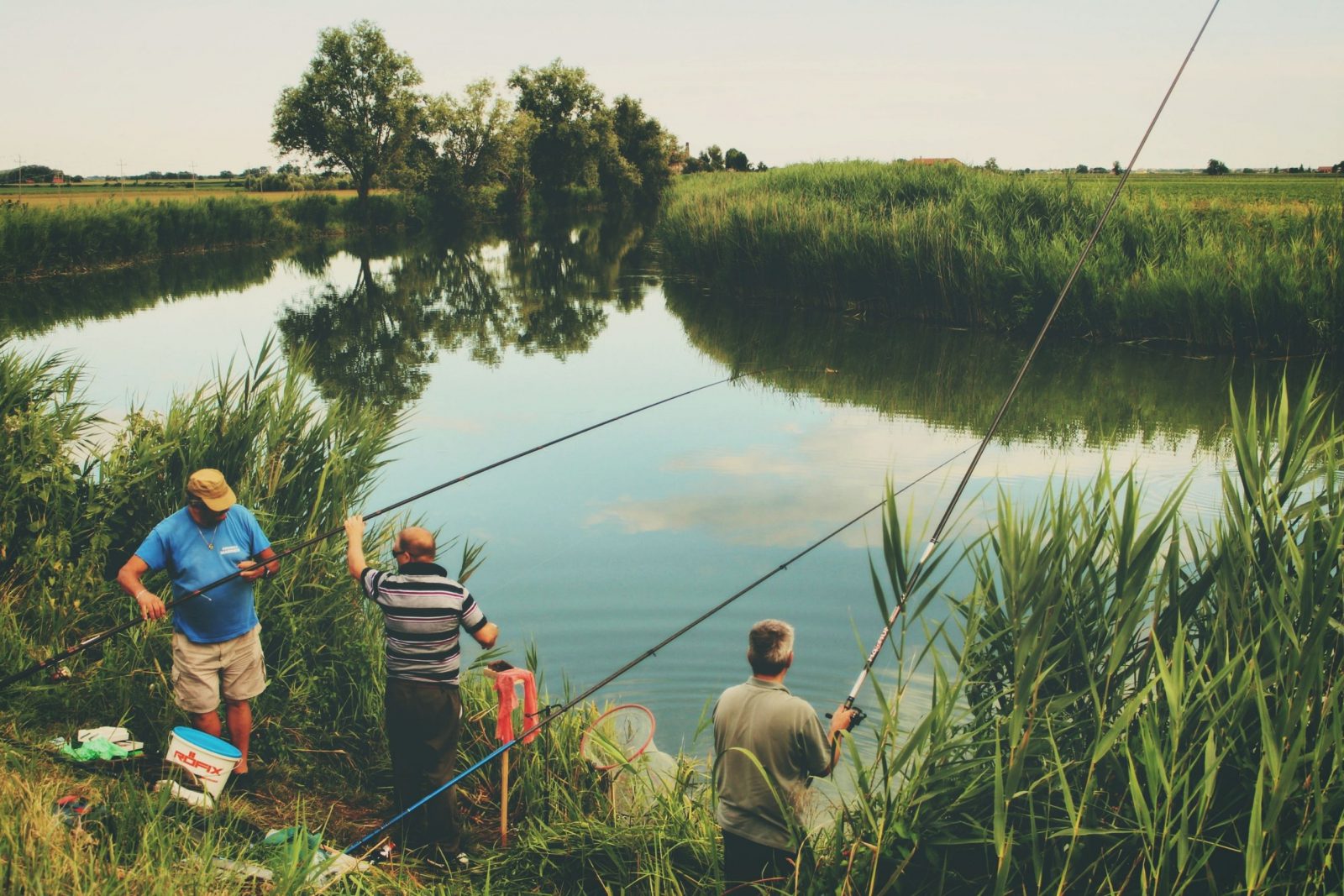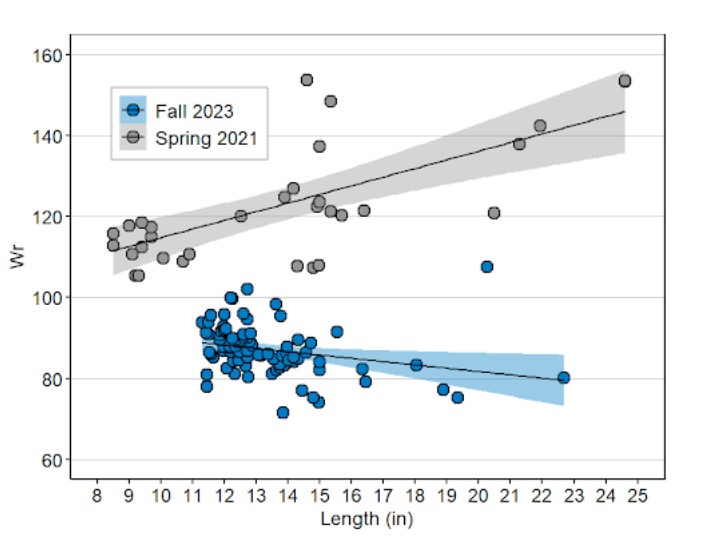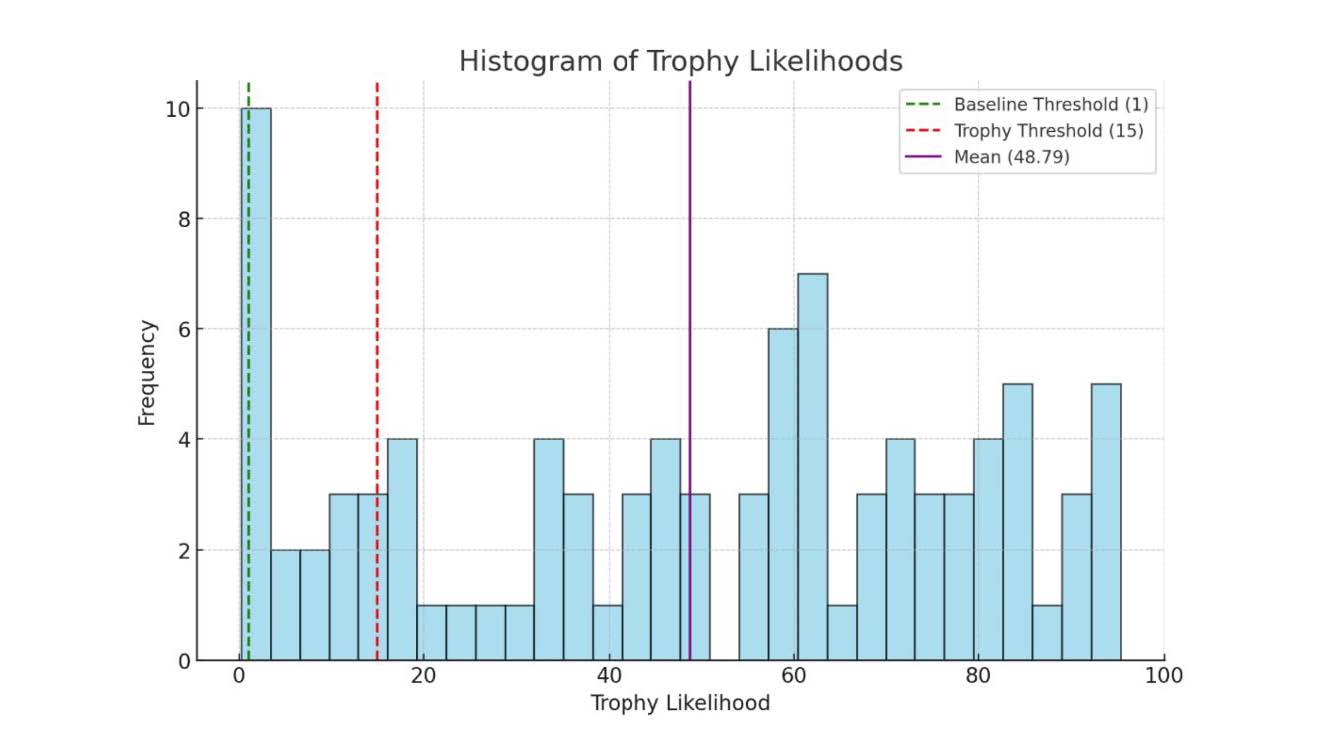
Great Genetics, Poor Outcome…
AS SEEN IN POND BOSS MAGAZINE
It is a common thought among anglers that if you have trophy bass genetics in your lake, you will one day have trophy bass. Sounds logical, but experience has shown that growing big bass is not that simple. Instead, trophy genetics must be coupled with a well thought out, well executed management strategy that is both data driven, as well as nimble when necessary. If you are not mindful, too much emphasis can be put on your bass population’s pedigree, while other critical management tasks receive less attention.
What if I told you that you have caught a trophy bass in your life, but never knew. Instead of being a trophy, it was underweight and undersize. Following up on the Article, “Four Founding Principles When Managing Trophy Fisheries,” published in the May/June 2024 issue of Pond Boss, the first principle is to maintain the proper number of genetically superior predators relative to the waterbody’s productivity. Genetics are incredibly important, but they are only a piece of the puzzle.
When going through the effort of improving genetics, it is important to take each of these four principles seriously. Otherwise, you should resist the temptation to improve bass genetics. If it were as simple as “just improve the genetics,” trophy fisheries would be common. As a refresher, here are those four foundational principles:
- Maintain the proper number of genetically superior predators relative to the waterbody’s productivity.
- Congregate predators to enhance the angling experience and data collection.
- Minimize fish stress.
- Mitigate limiting factors and risks of failure.
Reflecting On A Fishery with Genetic Potential
To provide some perspective, as well as validate the importance of these principles, let’s take a look at a fishery with absolutely incredible genetic potential. Years ago, this 28-acre lake in Texas was slated to become a trophy fishery. It was in the right place at the right time. Thanks to an excessive drought, the lake water levels were incredibly low. This allowed the fishery to be built from the ground up, rather than trying to transform the existing broken fishery. The lake bottom was reworked and then, when Mother Nature decided, the lake filled. Next, forage fish were stocked. Within a couple of years, the lake was loaded with forage fish. At that point, a low number of Largemouth bass with outstanding genetics were stocked.
The bass thrived, growing incredibly well. At age 48 months, the initial generation ranged from 8-14 pounds in size, and their first two successful generations of offspring that were less than 24 months old were also growing well. This great growth was a result of many variables coming together, including a thriving forage base prior to the introduction of predator fish, good water quality, sufficient productivity, low numbers of bass with superior genetics, and a long list of other minor variables. On an individual basis, each positive attribute is unable to provide the impact necessary for bass to reach trophy size, but together they do.
Although the initial growth rates were exceptional, behind the scenes the owner’s desires gradually changed. Although trophy fish were awesome, there was a lack of a desire to spend money on the lake. As a result, the trophy ambitions deteriorated and the lake was left alone. Keeping the fishery firing on all cylinders was straightforward and could cost as little as $10,000-$20,000 per year if accepting a low-density bass population. Although $20,000 is a great deal of money to many people, it is inexpensive when considering this fishery had potential to be one of the greatest private fisheries.
For more perspective, a tricked-out bass boat today pushes into six figures…and loses value as soon as you pull it off the dealer’s lot.
As a result of their decision, the fishery’s maximum potential faded away, slipping through their fingers at a time when sustainable success was nearly certain.
The Results of Too Many Predator Fish
Over a couple of years, the Largemouth bass population continued to reproduce, quickly shifting from a low number of predators to an elevated number. This change was subtle in some ways, but the impact was significant. Many of the other variables such as water quality, productivity, species of fish, otters, cormorants, and those other minor variables all stayed consistent from when the fishery was thriving. The biggest difference was the number of Largemouth bass per acre.
Once the number of bass increased significantly, there was a failure to follow the first principle, “maintain the proper number of genetically superior predators relative to the waterbody’s productivity.”
In order to stay on the previous trophy fishery trajectory, the number of bass needed to stay where it was, or the overall productivity of the lake needed to increase.
The same genetics present when this fishery was showing incredible promise are the same genetics present a couple of years later when the fishery is in terrible shape. The main difference is that the current headcount of predators fails to match the waterbody’s productivity. Figure 1 clearly shows that the lake is now in bad shape, despite being the same fishery with the same genetics.

To put this situation in perspective, if a biologist were to come across this lake today with the intention of transforming it into a trophy fishery, they would see a lake full of underweight, stunted bass; and without recognizing how amazing the bass genetics are, they would most likely eradicate the existing population and start fresh with young bass of a known trophy pedigree.
Oddly enough, the new pedigree could likely be significantly inferior to the bass they just eradicated, not necessarily better.
It is normal for people to get excited about stocking better bass genetics, since doing so will improve the potential of most fisheries. Unfortunately, better genetics may not actually be better than the genetics you already have, and thus will not yield a better outcome due to the other limiting factors interfering with success. As a result, the effort and expense of improving genetics is a poor use of resources, unless you are going to follow through with all of the necessary management tasks.
Once you have a clear understanding of what trophy fish management entails and you still decide you are committed, then understanding your existing bass genetics, as well as stocking bass with better genetics, should be pursued.
Knowing What Genetics to Introduce Into Your Fishery
So, with the easy part out of the way, here are some things to consider. How will you know the genetics you are introducing are better than what you already have? If the data indicates you should stock your new superior bass, how do you know these new bass survived and are making an impact? And at what point do you know you have successfully improved the genetics enough to reduce or discontinue your genetics-enhancing stocking program?
These are tough questions, and successfully navigating them will impact your success. Even if you are blessed with sufficient resources to spend money inefficiently, it is still important to have a sound strategy and to be intentional.
The tools available to identify and assess bass genetics have improved significantly over the past couple years, and as a result, we now have the ability to answer those tough questions. Most recently, the DNA of a diverse group of Largemouth bass was analyzed by Red Hills Fishery in an attempt to identify genetic markers that big bass have in common. After years of research and hard work, Red Hills has pioneered the development of 12 Single Nucleotide Polymorphism (SNP) markers specifically designed to identify the genetic trophy potential in Largemouth bass.
These findings are significant, as Red Hills now has a proprietary blueprint to assess the probabilities that a bass has the genetic makeup to reach sizes greater than eight pounds. As time goes on, they can build on this, mapping out the genetic make-up of bass that reach state record sizes, and maybe even identify bass that have more aggressive behavior/easier to catch, are resistant to diseases, etc.

For trophy probabilities, Red Hills has developed likelihood scores that range from 0-100 and the average fish is a 1. To interpret likelihoods for your fish, consider the category. For instance, a score of 22 is 22 times more likely to be a trophy than the average fish and therefore falls into the High Likelihood category… which is good! Currently, Red Hills considers these markers valid within pure strain Florida bass as their action with Northern genes is not yet fully understood. This bar graph (Figure 2), is the genetic data collected from the 94 bass seen in Figure 1, Fall 2023. These poor performing bass are on average 48.8 times more likely to reach trophy size than an average bass! But as seen, genetics is only part of the trophy bass management equation, otherwise these bass would continue to follow their 2021 trend.
Additionally, Red Hills’ analysis allows us to look at strain, as well as relatedness/diversity within bass populations. Depending on the waterbody and the goals, these additional tests help make informed decisions about stocking strategies and management practices, ultimately improving the odds of success.
Replace Small, Unhealthy Fish with Better Genetics
To summarize, we can now sample existing bass populations, assessing them for trophy potential, and if the bass are lacking sufficient genetics, we can replace them with better fish.
Keep in mind, based on current research, improved genetics does not necessarily mean you will grow bass well beyond 8-10 pounds, but it certainly means that more of your bass population will be capable of reaching 8-10 pounds…if you do your part.
Trophy bass are rare, and things must go well for many years in order for bass to reach trophy status. The attention to detail required, as well as the data necessary to succeed, can be overwhelming. Fortunately, advancements are improving odds of success, which helps to minimize blind spots when setting out with trophy ambitions. In particular, we now have this incredible insight into trophy bass genetics.
If achieving a trophy fishery is important to you, understand that the odds are not in your favor, and that you will only have a limited number of attempts to reach your goal. Don’t become complacent. Great genetics are critical, yet also relatively useless unless you are willing to manage the fishery properly. Proper management requires proper foresight, which is most prevalent when cutting edge advancements are utilized by biologists who have put in many years of purposeful practice.
We Can Help You Grow Big Fish
Contact Us for Fisheries Management Services
Call us at 888-480-5253 or complete the form below to connect with an aquatic management expert.
SOLitude Lake Management is a nationwide environmental firm committed to providing sustainable solutions that improve water quality, enhance beauty and preserve natural resources.
SOLitude’s team of aquatic scientists specializes in the development and execution of customized lake, stormwater pond, wetland and fisheries management programs. Services include water quality testing and restoration, algae and aquatic weed control, installation and maintenance of fountains and aeration systems, shoreline erosion control, muck and sediment removal and invasive species management. SOLitude partners with homeowners associations, golf courses, private landowners, businesses and municipalities. SOLitude Lake Management is part of Rentokil, a leading business services company, operating across the United States, Canada and Puerto Rico.
For more information, visit SOLitude Lake Management at solitudelakemanagement.com, and connect on Facebook, LinkedIn, Twitter, Instagram and YouTube.









